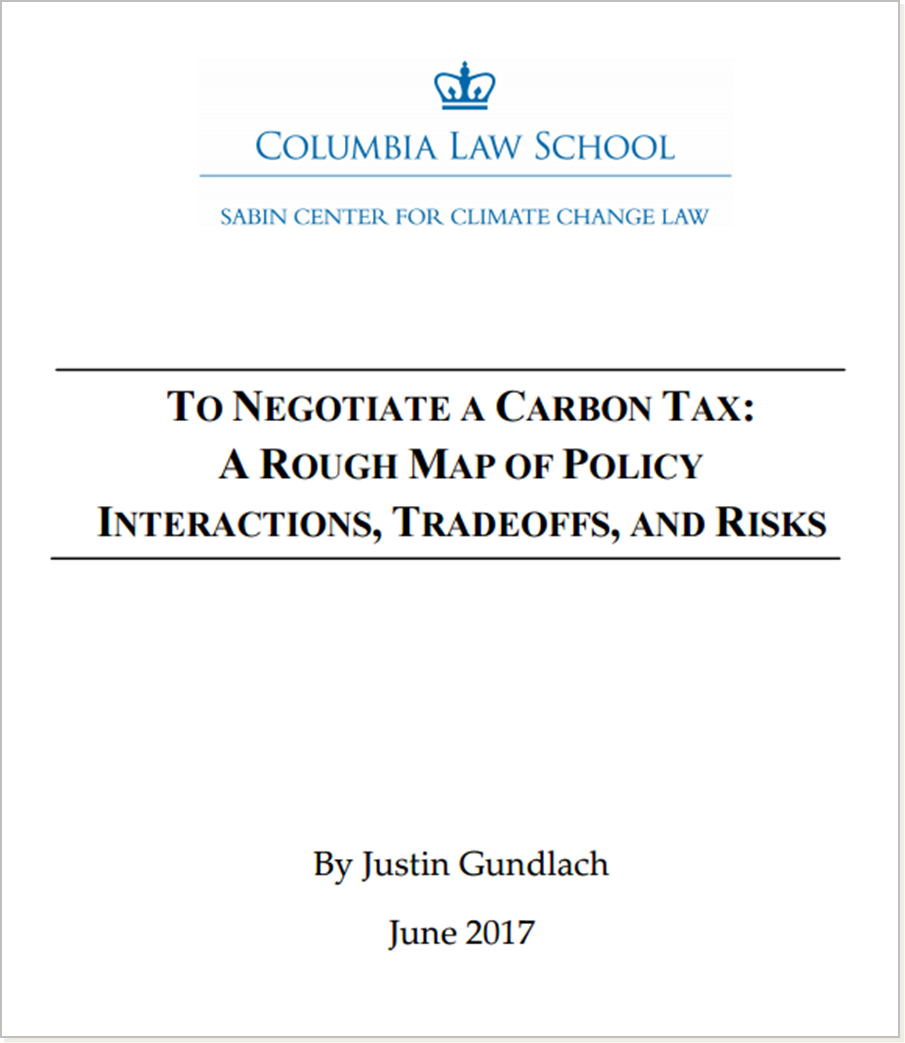By Maria Antonia Tigre
On March 15, 2022, the Full Federal Court of Australia, an intermediate appellate court, unanimously overturned the primary judge’s decision in Sharma and Others v. Minister for the Environment to impose a duty of care on the Minister for the Environment to mitigate climate harm to your people in considering whether to approve a major coal mine expansion. The Court found that the relationship relied on between the youth plaintiffs and the Minister lacked the closeness and directness that the common law demands before finding an applicant is entitled to a legal remedy against a party whose conduct has caused or may cause them harm. However, despite allowing the Minister’s appeal, the Court rejected the Minister’s argument that the primary judge made findings based on evidence of climate change that were unfounded.

The decision has significant implications for future climate litigation claims in Australia. Prior to this decision, the Sabin Center’s Network of Peer Review Scholars on Climate Litigation held a webinar on the Sharma case. The webinar covered the background of the case as well as the 2021 decision which was now reversed. This blog provides a preliminary analysis of the decision in Minister for the Environment v. Sharma and Others and its impact for climate litigation in Australia.
Background on the claim
In September 2020, eight students and their adult litigation representative (Sister Brigid Arthur) filed a climate class action lawsuit in the Federal Court of Australia on behalf of all Australian children. The case was brought against the Federal Minister for the Environment, Sussan Ley, in relation to her powers to approve a new coal project, the Vickery Extension Project. The Project involves an extension of a preexisting coal mine, and would produce an additional 100 million tonnes of CO2 when the coal is combusted. The plaintiffs alleged that the Minister owes a common law duty of care to Australian children to avoid causing climate harms in the exercise of her statutory powers to approve the project. The plaintiffs asserted that digging up and burning coal would exacerbate climate change and harm young people in the future. The young claimants sought declaratory and injunctive relief to stop the Minister from breaching the alleged novel duty by approving the coal mine extension. The argument brought by the youth plaintiffs was novel in the Australian context.
2021 Federal Court Decision
In May 2021, the Court dismissed the application for an injunction. However, in July 2021, the Court accepted the children’s arguments on the existence of the duty, declaring that the Minister has a duty to take reasonable care, in the exercise of her powers under the Environment Protection and Biodiversity Conservation Act 1999 (Cth) (the EPBC Act) to avoid causing personal injury or death to Australian children “arising from emissions of carbon dioxide into the Earth’s atmosphere.” Based on the unchallenged scientific evidence brought by the plaintiffs, the Court recognized that the approval of the extension project would risk future injury to the children from climate hazards brought by global warming.
The decision from the Federal Court was significant for two reasons. First, the Court extensively considered and relied on the scientific evidence presented on the nature and foreseeability of climate harms. Peel and Markey-Towler note that the “findings of fact made are likely to set important scientific parameters for future cases.” Specifically, the Court did not accept the Minister’s argument that the contribution of the mine’s extension would be ‘de minimis’ and ‘negligible.’ Instead, the Court reasoned that even a fractional increase could precipitate a tipping cascade towards the 4oC future world.
Second, the Court found that the relationship between the Minister and the children was sufficient to find a novel duty of care owed by the Minister in the exercise of her statutory powers. The finding relied on (i) the reasonable foreseeability of the risk of death or personal injury through heat waves or bushfires, (ii) the precautionary principle, (iii) the special vulnerability of the children, and (iv) their reliance on the Minister for protection. The Minister had substantial and direct control over the source of harm, responsibility for the interests of future generations in the health of the environment, and knowledge of the potential climate consequences. The decision was highly regarded as breaking legal grounds and representing a significant shift in climate litigation towards a duty for governments to care about climate harms (see here and here).
The Minister subsequently appealed the decision. The Full Federal Court heard the appeal in October 2021.
2022 Full Federal Court Decision
On March 15, 2022, the Full Federal Court unanimously overturned the primary judge’s decision to impose a duty of care on the Minister. The Court accepted the Minister’s appeal on the duty of care but dismissed a challenge to the judge’s factual findings about climate change. However, the three-panel Court disagreed on the grounds for allowing the Minister’s appeal and each wrote separate reasons.
Chief Justice Allsop found that the posited duty of care could not exist within the scope of the EPBC Act. Allsop reasoned that (i) the matter is unsuitable for judicial determination due to its nature and character, (ii) the duty was “inconsistent and incoherent” with the EPBC Act, and (iii) issues of indeterminacy, lack of special vulnerability and control, and nature of the governmental policy make the relationship between the Minister and the children inappropriate for the imposition of a duty. In the opposite direction of some recent decisions in Europe in which the courts called on the government to take appropriate measures to mitigate climate change, Allsop CJ argued that since the Australian Parliament had yet to translate the commitments under the UNFCCC into Commonwealth law, it was inappropriate for the judiciary to consider whether a duty of care had been breached. However, Allsop CJ significantly relied on an argument of ‘tiny’ liability which could mean that a ‘material’ harm could still succeed in future tort cases.
Justice Beach had a different reasoning for rejecting the duty of care. Dismissing Allsop CJ’s political question argument, Beach found there was a “lack of sufficient closeness” and directness between the Minister and the Australian children. The closeness is demanded by common law before finding an applicant is entitled to a legal remedy against a party whose conduct has caused or may cause the harm. Beach made sure, however, that the decision did not close the door for a duty of care in future litigation, in case “one or more members of the claimant class may suffer damage” and “have an apparently complete cause of action.” Asserting the existence of a relevant duty of care, breach of duty, causation or damage should be open to them as no issue of estoppel arises from the appeal.
Curiously, Beach J stated that these legal technicalities “may have reached their shelf life,” indicating that the common law can adapt to modern challenges, especially ones that have wide-scale consequences that transcend temporal boundaries and geographic ranges. Ultimately, however, Beach J opined that it was for the High Court (Australia’s apex court), not the Federal Court (where the case originated), to “engineer new seed varieties for sustainable duties of care, modifying concepts such as ‘sufficient closeness and directness’ and indeterminacy to address the accelerating complexity, multiple links and cross-links of causal relations.”
Justice Wheelahan found that (i) the EPBC Act cannot establish a duty of care relationship between the Minister and children, (ii) establishing a duty would be incoherent with the Minister’s functions under the EPBC Act and (iii) it was not foreseeable that approval of the coal mine extension would cause personal injury to the children.
The decision by the three justices (though based on differing reasoning) means that the Minister does not owe a duty of care to Australians under the age of 18 to mitigate climate risk in considering whether to approve the Vickery Extension Project under the EPBC Act. The three judges acknowledged the likelihood of future climate litigation by inviting the parties to write further submissions to resolve the case in a manner that would not unduly prejudice future climate litigants. This is especially relevant because the young claimants brought the case as a representative proceeding on behalf of all Australian children. The children now have until Apr 12, 2022 to file an application for special leave to appeal to the High Court. For an application to be granted, the case must raise a matter of general importance for Australian law.
Significance for future litigation
In practice, the decision of the Federal Court has “restored the status quo” in respect of the obligations and duties of ministers when discharging their statutory obligations. However, the reasoning of Justice Beach leaves open the possibility of a duty of care where there is a closer nexus between the risk and the harm. Such comments will likely be explored in future litigation. Another relevant aspect of the decision lies in the fact that Sharma was tied closely to the Minister’s role under the EPBC Act, which is not a piece of climate legislation. Its defeat, therefore, does not mean the end of a duty of care argument in other contexts.
For example, in the pending case of Pabai Pabai and Guy Paul Kabai v. Commonwealth of Australia, First Nations’ leaders allege that the federal government owes a duty of care to Torres Strait Islanders to take reasonable steps to protect them, their traditional way of life, and their marine environment from current and projected impacts of climate change. Based on a different legal and factual framework, the plaintiffs argue for a duty of care to protect the Islanders from actual and predicted climate change impacts. The case was filed in October 2021 and is still pending.
Significantly, the Chief Justice noted that the facts of climate change were undisputed and largely admitted by the Minister. This means that the primary judge’s findings of fact about the risk of harm of climate change to children remain. The Court noted that “the nature of the risks and the dangers from global warming, including the possible catastrophe that may engulf the world and humanity” were never in dispute. Considering how climate change remains a divisive and politicized issue in Australia, the consequences of the factual findings of the lower court remain significant. By recognizing that these issues remain undisputed, a superior Australian court has affirmed the latest climate science and what it means for humanity.
Dr. Maria Antonia Tigre is the Director of Global Climate Litigation at the Sabin Center for Climate Change Law at Columbia Law School.




